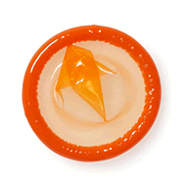A very happy National HIV Awareness Month...
Advances in HIV prevention and testing? Well happy July to us all.

The Food and Drug Administration (FDA) is definitely doing its part to make this July, which just happens to be National HIV Awareness Month, a special one. It kicked off the month by approving OraQuick, the first DIY over-the-counter HIV test to be made available on the U.S. market. Now, mid-month, the FDA has approved a once-a-day pill that can seriously reduce the risk of contracting HIV.
HIV status, no clinic visit necessary?
We’ve mentioned in the past that research suggests women are more likely to get tested for STIs if they can do it themselves, in the privacy of their homes. Not a huge surprise—going to get tested, then waiting around for the results, can be nerve-racking for anyone. Considering that 1 in 5 people in the U.S. who are infected with HIV don’t know it—and that HIV is easier to treat the earlier you catch it—anything that makes it more convenient and comfortable for folks to find out their status is a step in the right direction.
The deets: OraSure Technologies, which created the OraQuick test, says the test will be available over-the-counter at more than 30,000 retailers and online starting in October. They haven’t set the price yet, but expect it to be more than the $17.50 professionals now pay for the test since it’ll need to be packaged and labeled for the general public.
The FDA emphasized that the test isn’t 100% accurate—in a consumer trial it missed 1 in every 12 HIV positive people who took it.
Can HIV be prevented?
We’ve written before about the potential of antiretroviral drugs (ARVs) to help HIV negative people avoid getting the virus from their HIV positive partners. Less than a year later, a drug with that noble purpose is hitting the U.S. market. It’s called Truvada and it’s a daily pill that HIV negative folks can take to greatly reduce their odds of getting the virus.
The deets: Truvada is already on the market to treat HIV—and some doctors already prescribe it as a preventive measure. The FDA decision just means it can be officially marketed that way.
Truvada isn’t for everyone—it’s probably most useful for HIV negative people who are in a relationship with someone who’s positive. It’s expensive (to the tune of about $13,000 per year, though that could depend on insurance coverage) and has its own set of side effects. Folks who use it still need to use condoms, choose their partners carefully, and get tested regularly.
What does it all mean?
Anything that gives people more ways to stay healthy and happy is a good thing in our book and these two new developments definitely add to the arsenal in the fight against HIV/AIDS. Still, they’re no substitute for safe sex practices like using condoms and getting tested. So if you want to follow the FDA’s lead and do your part for National HIV Awareness Month, allow us to offer a few recommendations.
Make sure you’re an unstoppable condom superstar.
Get tested and share your status with someone special. (You can also visit our friends at GYT for answers to some common testing questions.)
Spread the word. You can share this article or our tumblr post with 5 Facts for HIV Awareness Month for starters, pin some infographics on AIDS.gov, or get involved in the CDC’s “Let’s Stop HIV Together” campaign.
*Editor’s Note: This article was amended on July 20th, 2012, to clarify that 1 in 5 of HIV positive people don’t know they’re infected.
How do you feel about this article?

Heat up your weekends with our best sex tips and so much more.
